|
RIPSTER REVIVALS #14
Yet more ‘occasional’ ramblings from the world of (mostly)crime fiction and thrillers. Books
read, re-read and still to be read; old favourites rediscovered, new gems uncovered.
|
Scene of the Crime(Fest)

CrimeFest will indeed be leaving the festival scene next month as its sixteenth incarnation will see the end of what has been rightly labelled ‘the friendliest of all gatherings celebrating murder and mayhem’. The first 450 attendees registering for 2025 will take away early copies of the Leaving The Scene anthology of new short stories written for the occasion by an international cast of 21 crime-writers before the collection is published by No Exit Press in August.
I am naturally delighted to be in such distinguished company, as well as some old chums and chumettes who are loyal CrimeFest alumni. The story behind my contribution, however, is tinged with sadness, as I was encouraged to write my first short story in ten years by Peter Lovesey.
A regular reader of my Getting Away With Murder columns and sometimes cited therein as ‘our West Country correspondent’, Peter and I would email fairly regularly and it was in one particular exchange last year when Peter’s enthusiasm for the short story finally rubbed off on me and I wrote one, sending it to him saying he was to blame! Being an utter gentleman, Peter said he liked it and all I needed to do write another ten or eleven to make an anthology.
Anyone in the business will know that volumes of short stories by an individual crime writer are, these days, fairly rare events. I was delighted to hear that Peter Lovesey was due to publish his seventh such collection in a career which has spanned six (or is it seven?) decades.
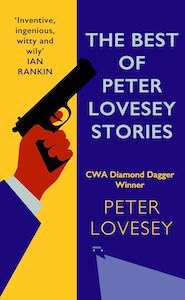
The Best of Peter Lovesey Stories will be published by Allison & Busby in June and I was actually reading the advance publicity material for it when I heard of Peter’s death.
Peter Lovesey, along with Reginald Hill and Robert Barnard, all born in 1936, formed what some hack (me) once referred to as the Golden Triumvirate of solid British crime-writing. They are no longer with us but I was proud to have known them all. [See Postscript at end.]
Hitchcock’s (Finest) Hours
Whilst casually flipping through the plethora of channels now available on my not-that-smart television, I found myself watching a black-and-white episode in the Alfred Hitchcock Hour series of 1962. It was entitled Captive Audience and starred James Mason (a fellow native of Huddersfield) and the delectable Angie Dickinson. As the action unfolded, although transposed to an American setting, I realised that the plot seemed familiar and sure enough it was, based on the 1958 novel Murder Plan Six by John Bingham.
.jpg)
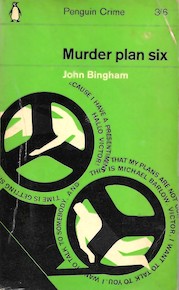
It was a notable crime novel by a notable crime writer ( a real life MI5 officer, once John Le Carré’s boss), which cheekily includes Victor Gollancz, Bingham’s publisher, as a character who thinks one of his authors is about to commit a murder rather than just write about one. All John Bigham’s books are good, whether they are crime novels (never conventional ones) or when they stray into the world of espionage and it is sad that such a writer of quality has slipped from public memory.
I had no idea that the book had been filmed for television and I admit that the Alfred Hitchcock Hour series, if it was ever broadcast on UK television, passed me by completely. (But it would have been over sixty years ago and even I was young once.) On investigation, I discovered that a large number of the hour-long films in that 1962 series, which my old pal Len Deighton tells me was produced by Joan Harrison, wife of Eric Ambler, were based on novels by some rather famous names, including: Henry Cecil, Julian Symons, Richard Matheson, Celia Fremlin, David Goodis, John D. MacDonald, Cornell Woolrich and Patricia Highsmith.
Now that, with due respect to Ms Dickinson, is what I call a cast list.
If only the French had a word for noir...
I am grateful to my old chum Rob Mallows, the curator of that indispensable website The Deighton Dossier, for the word Tsundoku which he assures me is the Japanese term for a pile of books waiting to be read.
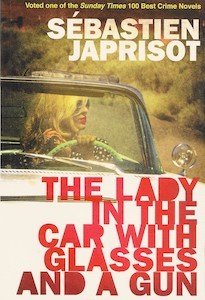
I continue to make slow but steady progress chipping away at my own towering TBR pile and recently rescued, read and thoroughly enjoyed the wonderfully-titled: The Lady in the Car with Glasses and a Gun by Sebastien Japrisot [1931-2003], who has been described as the French Graham Greene, though to be honest, The Lady etc. conjured up, for me, shades of some of the work of Cornell Woolrich (writing as ‘William Irish’). There is a female protagonist who seems to be the victim of a bizarre, almost supernatural, series of coincidences as the short-sighted, mild-mannered Dany Longo embarks on a spontaneous road trip across France in a company car – a not inconspicuous Thunderbird convertible with enough room in the boot (or trunk if you’re being picky) to conceal a body. And if that was a sort of spoiler alert, well you always knew something nasty was coming, as Dany discovers along her unplanned, spur-of-the-moment trip that she has been there and done that before, and quite recently and in that car. Is she going mad, does she (and the car) have a doppelganger, or is someone setting her up? Given the speeds she drives at and the amount of alcohol she consumes, anything could be possible.
Whilst the plot is slightly ludicrous if you think about it too much, and none of the characters are particularly empathetic, the hypnotic quality of Japrisot’s writing, even when translated, is undeniable. I am assuming the 2019 paperback edition I read was a more recent translation than the original 1967 English version, but couldn’t be sure. Either way, this is a great example of a dark, dream-like road trip which, from the off, you know is not going to end well for somebody.
The Lady in the Car (etc.) got me thinking about other thrillers in my library which have pub-quiz worthy titles, one of which I have read at least three times and owned for 53 years, although in all that time I have never met anyone else who has read it, or even remembers The Man Who Held the Queen to Ransome and Sent Parliament Packing.
Peter Van Greenaway’s hopefully not prophetic thriller was first published in 1968 and came out in paperback four years later. It spookily foretells the political craze for ‘Victorian values’ in the Thatcher era, and cashes in on public paranoia about crime, immigrants and ‘anti-social behaviour’ whilst smoothly subverting all the right-wing’s answers to their concerns as a small band of regular army officers decide enough is enough and stage a coup.
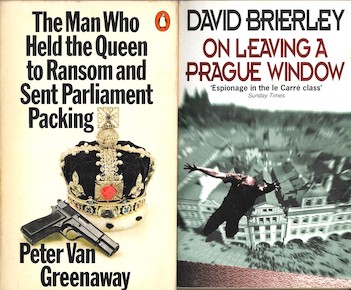
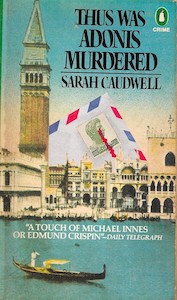
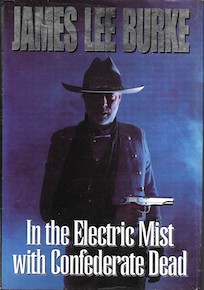
Whilst Greenaway’s title sums up exactly what happens in his novel, in David Brierley’s 1995 thriller On Leaving A Prague Window the title encapsulates a setting: the Prague of post-Cold War, post-Velvet Revolution where many an old score remains unsettled. It is a title which will be subtly familiar to anyone who learned about The Thirty Years War at school (some of us did!) and the famous ‘defenestration of Prague’ in 1618.
For ten years, until her untimely death in 2000, I was a friend and fellow boulevardier of Sarah Caudwell, regularly touring the wine bars of Holborn and some rather dubious clubs in Soho, and for that reason alone I treasure a much-loved (American) Penguin copy of her 1981 debut novel Thus Was Adonis Murdered. Hysterically funny, the book launched Professor Hilary Tamar on to an unsuspecting legal establishment and a readership which appreciated fine, dry wit. Sarah, who long fought to avoid the epithet ‘prolific’ (unlike most crime writers), left us far too soon and with only four novels, but all are worth seeking out.
I have no idea how many novels, most featuring Louisiana detective Dave Robicheaux, James Lee Burke has now published, and In the Electric Mist with Confederate Dead (1993) was probably his twelfth when, in my opinion, he was at the height of his descriptive powers, showing that the crime novel could read like poetry. Although I have had my reservations about his more recent output, I cannot understate the importance of Burke’s style in American crime-writing – what the Washington Post called ‘the luminosity of his writerly voice’ – as well as his emotional attachment to the history and environment of the bayous of southern Louisiana. In many ways In the Electric Mist with Confederate Dead (a great title and a great book, by the way) could be almost be a generic descriptor for all his work.
Do Mention the War
In my last missive I noted no less than five upcoming British mysteries set during WWII. I was, of course wrong, for no sooner had I dismounted from my pulpit I was confronted with two more.
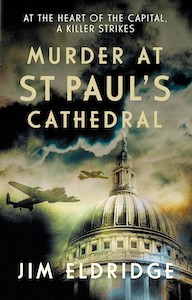
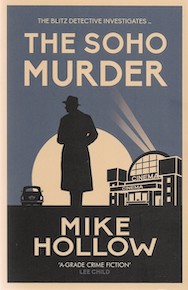
Jim Eldridge, after staging murders in museums, hotels and Underground stations, turns the attention of his police detective hero DCI Edgar (Saxe?) Coburg to notable cathedrals, starting with Murder At St Paul’s Cathedral [Allison & Busby this month]. A follow-up involving, no doubt, more murderous mayhem at Canterbury Cathedral has been announced for 2026.
Mike Hollow’s ninth outing for his ‘Blitz Detective’ Inspector John Jago also begins in an air raid on the area around St Paul’s, which devastates the heart of the British publishing industry – begging the question of who tipped off the Luftwaffe – but Jago is drawn to an individual murder in Soho. The Soho Murder [also Allison & Busby] is published in May and a tenth in the series, The Bloomsbury Murder is flagged for October.
These days there are so many bodies lying around London (and also Cambridge, Oxford, Leeds and Glasgow – see Revivals #13) anyone would think there was war on.
Coming Up (New Stuff)
Contrary to popular belief, I do take an interest in new crime fiction, though for the sake of my blood pressure I have to ration my intake these days.
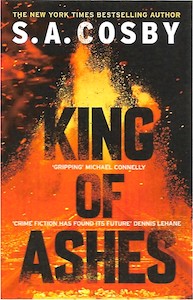 I have followed the publishing career of S.A. (Shawn) Cosby since he was first published here in the UK. I can date the start of my interest (and admiration) to a party thrown by publisher Headline in 2020 in the upstairs room of a pub somewhere near St Paul’s. It turned out to be the last publishers’ party before the first Covid lockdown was imposed, or perhaps just the last one I was invited to.
I have followed the publishing career of S.A. (Shawn) Cosby since he was first published here in the UK. I can date the start of my interest (and admiration) to a party thrown by publisher Headline in 2020 in the upstairs room of a pub somewhere near St Paul’s. It turned out to be the last publishers’ party before the first Covid lockdown was imposed, or perhaps just the last one I was invited to.
![]() Among the forthcoming books being promoted that evening was a debut crime novel by an American no-one had ever heard of, entitled Blacktop Wasteland. Encouraged by the super-enthusiastic Headline publicity team, I started reading an advance proof on my train home and found myself hooked on this hard-boiled slice of contemporary crime in rural Virginia. And subsequent thrillers proved this was no flash-in-the-pan; all tough, sometimes brutal tales, but always with a big, generous heart when it came to the trials and tribulations of the characters. I was looking forward to his new novel King of Ashes which is published in June by Headline, but as they have kindly sent me an advanced proof, I can already say that it is very, very good and involves a family under threat from local crime lords while trying to protect their specialist business of running a local ‘crematory’ (crematorium).
Among the forthcoming books being promoted that evening was a debut crime novel by an American no-one had ever heard of, entitled Blacktop Wasteland. Encouraged by the super-enthusiastic Headline publicity team, I started reading an advance proof on my train home and found myself hooked on this hard-boiled slice of contemporary crime in rural Virginia. And subsequent thrillers proved this was no flash-in-the-pan; all tough, sometimes brutal tales, but always with a big, generous heart when it came to the trials and tribulations of the characters. I was looking forward to his new novel King of Ashes which is published in June by Headline, but as they have kindly sent me an advanced proof, I can already say that it is very, very good and involves a family under threat from local crime lords while trying to protect their specialist business of running a local ‘crematory’ (crematorium).
For a change of scenery, though still on the dark side of crime fiction, I can recommend the ‘Terra Alta Investigations’ of the former Catalan policeman Melchor Marin. In his latest outing, Fortress of Evil by award-winning Spanish author Javier Cercas, which is published this month by Maclehose Press, Marin has more family problems as having at last (he thinks) found peace with his teenage daughter Cosette now he has avenged her mother’s murder, the spikey 17-year-old ups and disappears and Marin follows her trail to Mallorca where she was last seen – or at least seen alive.
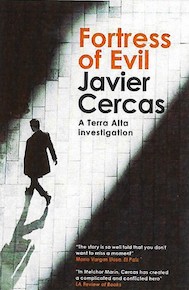
Payback Time
I am happy to report that a new edition of Russell James’ 1991 Brit Noir thriller Payback is now available, along with an audio version. Russell was once nicknamed ‘The Godfather of British Noir’ by Sir Ian Rankin (when he was a commoner) for his tough stories of London’s drug-riddled underworld, narrated in the first person.
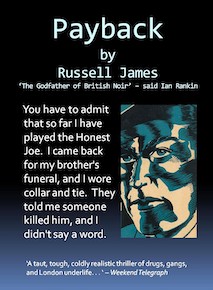
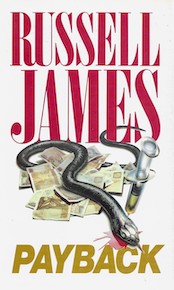
I still have a first edition hardback, inscribed by the author, from the days before Russell became a dedicated chairman of the Crime Writers Association and a respected historian of British crime fictional detectives but my beady eye was drawn to the quote on the new edition from the “Weekend Telegraph” which seemed oddly familiar.
I was not surprised when consulting the archives, to find that quote was taken from the review of Payback in my Daily Telegraph column of 14th September 1991 (though why the need to invent a publication called “Weekend Telegraph”?). In my review I called Russell James an original and innovative voice in the too-cosy world of crime fiction, which I also think worthy of a cover blurb, though I would say that, wouldn’t I?
Goodbye To Berlin
It was a delight to find an unread Tim Sebastian thriller in my TBR pile and it reminded me of me of what an absolutely superb writer of spy-fiction he was when chronicling the last stages of the Cold War. As a former BBC correspondent in Warsaw and then Moscow (from which he was expelled) in the 1980s, one really could not expect anything less. His 1992 novel Exit Berlin has a particularly tortuous plot involving a British spy who has defected to East Germany with a view to infiltrating the Stasi and uncovering their mole in British intelligence, but then suddenly the Berlin Wall comes down, the Stasi fade away and all bets seem to be off. Does our hero stay put or walk back into the West, where he is still, as far as he knows, regarded as a traitor in an attempt to complete his mission? With considerable trepidation, our now homeless spy launches his own dangerous quest for revenge which takes him to London, Oxford and Washington (with suspicious ease) and finally back to East Berlin.
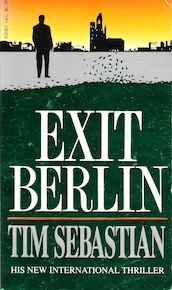
For all the espionage skullduggery and betrayal, of which there is plenty, I found Sebastian’s descriptions of an exiled spy’s life in Berlin, both before and after the Wall came down, to be the most fascinating and gripping parts of the novel. This, I have to admit, is in no small part due to fact that many of those Berlin scenes take place in the Prenzlauer Berg district and, specifically, along Schonhauser Allee, an area which I have got to know well in my trips to a united Berlin. Indeed, on my last visit I was presented with a framed photograph of the Eberswalder Strasse U-bahn station on Schonhauser Allee, which I am told was taken (illegally) by a well-known photo journalist documenting daily life in the East on the day before the Wall came down.
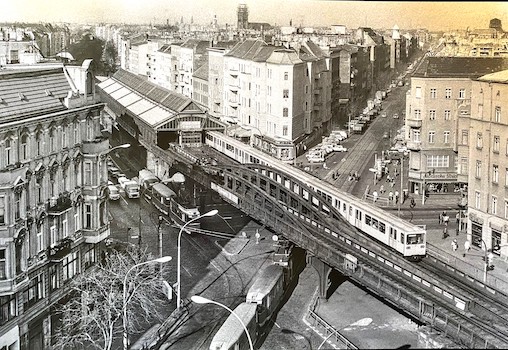
Postscript: Peter Lovesey
As part of our email exchanges, Peter Lovesey and I would send pictures taken at crime fiction events and challenge each other to identify the writers shown. This is one of Peter’s on which I only scored 50% correct.
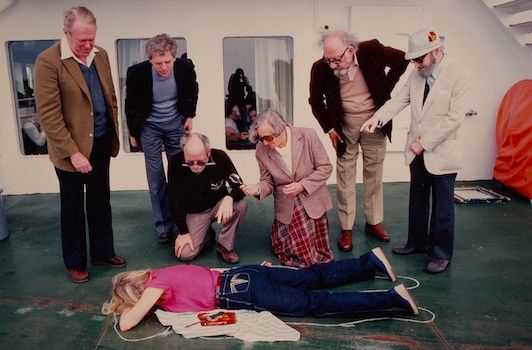
Participating in a ‘Murder At Sea’ event in 1981 and discovering an attractive ‘corpse’ were (left to right): Hilary Waugh, Peter L., Desmond Bagley, Dorothy B. Hughes, Julian Symons and Fred Dannay (one half of Ellery Queen).
But there was one I got instantly. To mark the launch of Peter’s first Sergeant Cribb novel Wobble to Death in 1970, staff at his publisher (Macmillan?) agreed to dress in Victorian garb and attempt a charity foot race in central London.
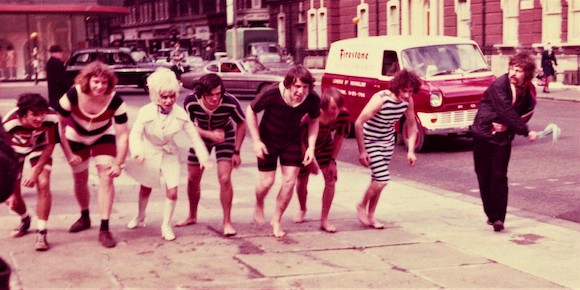
I instantly identified the guest participant (in mini skirt and white boots) as the late Dame Barbara Windsor, who was always willing to carry on for a good cause.
See you at CrimeFest
(unless you see me first),
The Ripster.